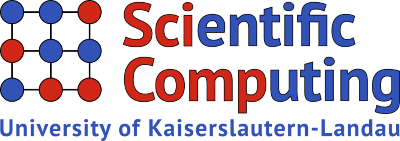Date and Place: Thursdays and hybrid (live in 32-349/online via Zoom). For detailed dates see below!
Content
In the Scientific Computing Seminar we host talks of guests and members of the SciComp team as well as students of mathematics, computer science and engineering. Everybody interested in the topics is welcome.
List of Talks
Event Information:
-
Thu04Jul2019
SC Seminar: Xun Huan
11:30SC Seminar Room 32-349
Prof. Xun Huan, Mechanical Engineering, University of Michigan
Title:
Optimal Experimental Design and Bayesian Neural Networks for Physics-Based ModelsAbstract:
Models and data are two critical components of scientific research: models provide predictions of what data we might observe, and data in turn help refine and advance our models. In this talk, we focus on two important interactions between models and data for complex physical systems: (1) optimal experimental design (OED) for finding the most useful data, and (2) Bayesian neural network (BNN) data-driven models for accelerating expensive predictions with uncertainty quantification.
First, we present the OED framework that systematically quantifies and maximizes the value of experiments. Indeed, some experiments produce more useful data than others, and well-chosen experiments can provide substantial resource savings. We describe a general mathematical framework that accommodates nonlinear and computationally intensive (e.g., ODE- and PDE-based) models. The formalism employs Bayesian statistics and an information-theoretic objective, and we develop tractable numerical methods with demonstrations on designing combustion kinetic experiments and sensor placement for contaminant source inversion.
Next, we introduce BNNs as data-driven surrogate models capable of rapid predictions while quantifying uncertainty, which are highly useful for real-time decision-making scenarios. We focus on their use for in-flight detection of rotorcraft blade icing using acoustic signals. With a database of computational fluid dynamic and computational aeroacoustic simulations produced from the open-source SU2 software, a BNN is constructed to directly map the acoustic signals to aerodynamic performance metrics, thus bypassing the expensive inverse problems. The prediction uncertainty is quantified by treating BNN weight parameters as random variables, thus revealing a distribution of predictions instead of a single-value output. This uncertainty distribution reflects the quality and confidence of the BNN prediction, information that is critical for pilot decision-making under potentially dangerous icing flight conditions.
